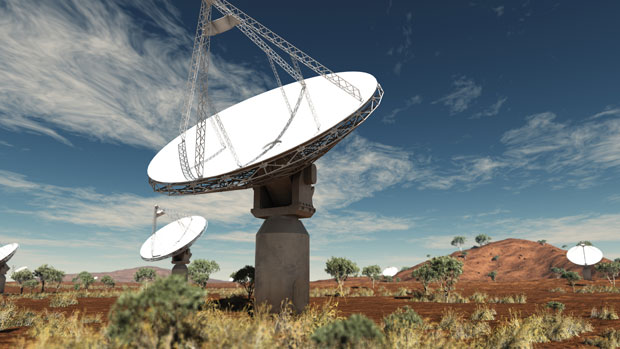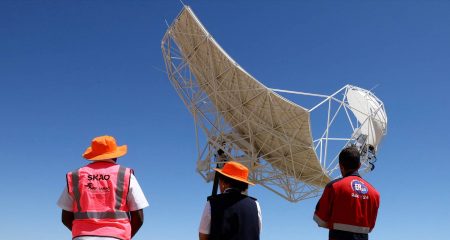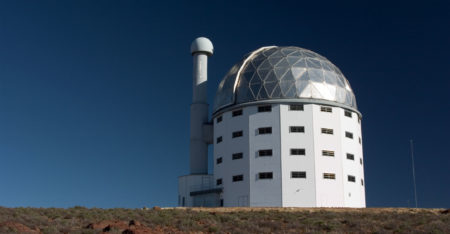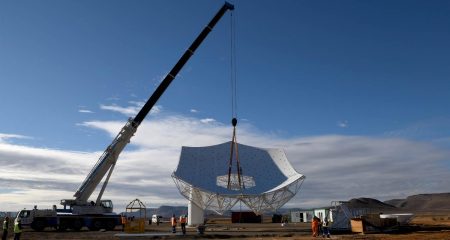
The multibillion-rand Square Kilometre Array (SKA) project has landed in SA hands, but it might be just a notional victory for the country as funding remains in limbo.
With an estimated budget of €1,5bn (R16bn) and most developed countries facing their own debt and funding crunch, it is unclear at this stage who will foot the bill, which could be bigger than the projected costs.
Science & technology minister Naledi Pandor has suggested it could almost double to about €2,5bn (R26,2bn), excluding maintenance costs. If she is on the mark, the project will present a funding headache for SA.
One of the biggest funders, the US, has already bailed on the project and the euro zone, which is teetering on the edge of a sovereign debt collapse, is unlikely to meet the initial funding expectation of this huge project that will be housed in the Northern Cape.
After nine years of hard toil, SA last week was rewarded with 70% of the location rights (Australia has the remainder), but the expectation is that the eight member countries of the SKA Organisation will all contribute to the total cost of the project. However, with the global economy on tenterhooks, it is uncertain where the money will come from or whether it will come at all. SA, with its R1 trillion infrastructure plans, cannot afford to pay more than what the treasury has already allocated towards the project. There are already warnings from global ratings agencies about SA’s growing public debt.
It was initially expected that Europe would fund 40% of the project, a comparable amount would come from the US and the balance from the other countries involved in the project. But in June last year the SKA consortium in the US decided to dissolve following the 2010 Astronomy Decadal survey, which did not give the project a positive funding recommendation.
Funding was a challenge
Because US astronomy and astrophysics projects are commonly selected every 10 years, it means no funding will be set aside for the SKA in this decade, although the US could still possibly join in the next decade. The project is expected to come online in 2024.
In a departmental progress report presented to parliament last year, Mmboneni Muofhe, chief director of international corporation resource at the department of science & technology in SA, said funding was a big challenge with the US not coming on board.
And, in light of continued financial turmoil in the euro zone and fears about the possibility of a Greek exit, it is unlikely that substantial funding from Europe will be forthcoming.
Who is in charge?
The project is led by the SKA Organisation, a non-profit company established in December last year. It is a private company in the UK that does not have share capital but members who are guarantors with limited liability.
Member countries of the organisation are SA, Australia, Canada, China, Italy, New Zealand, the Netherlands and the UK.
The funding model and each country’s contribution still needed to be negotiated, said Justin Jonas, the associate director of science and engineering at SKA SA. He emphasised that it was too early to tell what the funding structure would look like. “Every major project in the world has a different contribution model,” he said.
The global economic crisis had not been an issue in terms of the relatively small budget during the pre-construction phase, Jonas said, noting that even Italy was a member country, despite its euro zone woes. However, “it may be an issue soon when real construction money needs to flow”. Although there is no real capital expenditure until construction begins, a contribution is required from each country to fund the design phase.
The minimum contribution required from each of the eight members is €250 000/year, but the UK has opted to pay €2m/year and SA will contribute €1m. Membership of the organisation will remain open and it is expected that up to 20 members could join in the near future.
Exactly how much money would be contributed by whom and when had been a matter of flux and debate for some time, said Marian Shinn, former Democratic Alliance spokesperson for science & technology and now the spokesperson for communications.
Although letters of commitment were signed by SKA founding member countries in April last year, there was no legal mechanism for following through on their funding pledges, she said.
SA’s contribution
Jonas said SA had already committed R1,4bn to the MeerKAT telescope, which could possibly be offset against the total project cost. “We established the heart of it and we cannot afford to put in much more,” Shinn said. “It is an international project and it is time for the other countries to come to the party.”
Jabulani Sikhakhane, the treasury’s chief director of communications, said SA’s SKA commitments were and would continue to be funded through the department of science & technology’s budget. “An amount of R835m has already been spent on the SKA, with a further R547m budgeted for over the medium-term expenditure framework.”
SA’s contribution will come from the overall department budget, which has a projected fiscal allocation of R21-billion over three years. The government is aware of South Africa’s growing debt and the risk it poses. But Konrad Reuss, MD at rating agency Standard & Poor’s, said: “Government co-funding will not be at a level that would undermine its financial position, hence I don’t see it as a rating factor. The growing public sector wage bill or social transfer, if uncontrolled, would be a greater worry.”
Jonas said that although there would be economic benefits and business opportunities created during the construction and operation phases, participation in the project was not about direct economic impact.
“It enhances the region’s position in the knowledge economy and that will lead to secondary benefits like the development of individuals and institutions that are competitive in the global economy.” — Mail & Guardian
- Visit the Mail & Guardian Online, the smart news source




